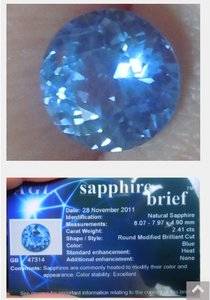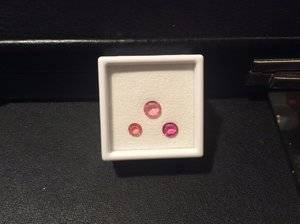Not in my case, AGL used an LA-ICP-MS to test for diffusion on my blue sapphire that I sent them. I confirmed the specific use of this machine with Christopher Smith.
I'm dying of curiosity as to why. I can't imagine AGL couldn't determine Be from the usual testing procedures. I can sort of imagine that someone wouldn't see - maybe a new lab tech - lattice diffusion under immersion (even though it's mostly really obvious, the photo in the Pala article is just one of the possible 'looks' of it), but that they couldn't tell from an elemental analysis with LIBS is very strange to say the least.
What was the stone, really? Was it diffused in the end, or not?
EDIT: And sorry for all the double posts; I couldn't find the multi-reply option (but will).
Last edited:





300x240.png)